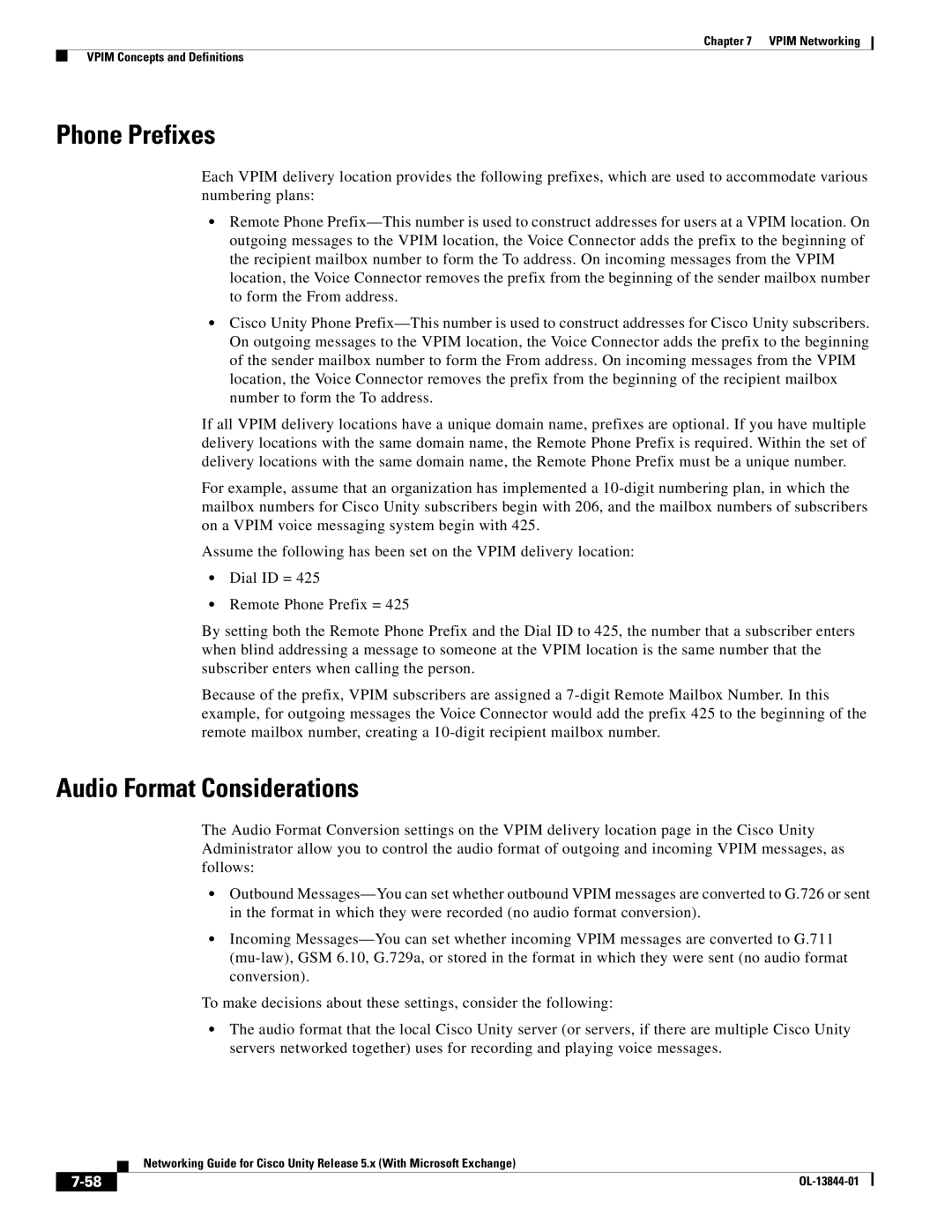
Chapter 7 VPIM Networking
VPIM Concepts and Definitions
Phone Prefixes
Each VPIM delivery location provides the following prefixes, which are used to accommodate various numbering plans:
•Remote Phone
•Cisco Unity Phone
If all VPIM delivery locations have a unique domain name, prefixes are optional. If you have multiple delivery locations with the same domain name, the Remote Phone Prefix is required. Within the set of delivery locations with the same domain name, the Remote Phone Prefix must be a unique number.
For example, assume that an organization has implemented a
Assume the following has been set on the VPIM delivery location:
•Dial ID = 425
•Remote Phone Prefix = 425
By setting both the Remote Phone Prefix and the Dial ID to 425, the number that a subscriber enters when blind addressing a message to someone at the VPIM location is the same number that the subscriber enters when calling the person.
Because of the prefix, VPIM subscribers are assigned a
Audio Format Considerations
The Audio Format Conversion settings on the VPIM delivery location page in the Cisco Unity Administrator allow you to control the audio format of outgoing and incoming VPIM messages, as follows:
•Outbound
•Incoming
To make decisions about these settings, consider the following:
•The audio format that the local Cisco Unity server (or servers, if there are multiple Cisco Unity servers networked together) uses for recording and playing voice messages.
| Networking Guide for Cisco Unity Release 5.x (With Microsoft Exchange) |
|
